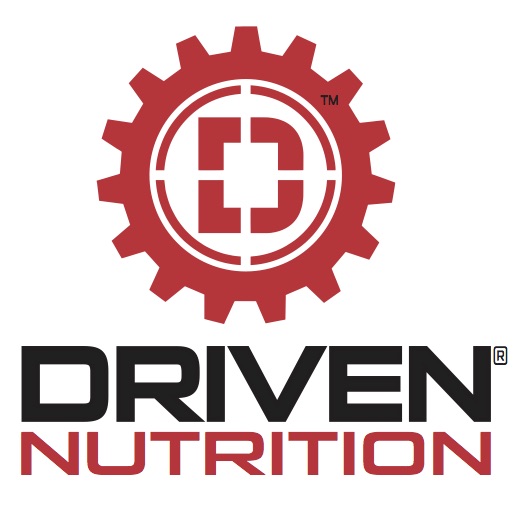The Ultimate Guide to Weight Loss: Unlock Your Potential
Are you tired of feeling lost in the sea of weight loss advice? Look no further than this ultimate guide to weight loss, designed to unravel the complexities of achieving a healthier lifestyle. In this comprehensive blog article, we’ll delve deep into evidence-based strategies, exploring the science behind weight loss and providing you with practical tips on how to lose weight for sustainable results.
Understanding A Calorie Deficit and Its Role in Weight Loss
What Is a Calorie Deficit?
A calorie deficit is a fundamental concept in weight loss that plays a crucial role in achieving and maintaining a healthy body weight. It refers to the state where you consume fewer calories than your body needs to maintain its current weight.
The Role of Calories in Energy Balance
To understand the impact of a calorie deficit on weight loss, it is essential to understand the role of calories as units of energy. Every calorie you consume serves as a potential energy source for your body. Energy balance is the relationship between the calories you consume through food and the calories you burn through daily physical activity and bodily functions. When you create a calorie deficit, you disrupt this balance by consuming fewer calories than you expend.
Macronutrients and Caloric Values
All of the calories we consume come from the 3 macronutrients: protein, carbohydrates, and fats. Protein and carbohydrates are 4 calories per gram, while fat is 9 calories per gram.
How Does a Calorie Deficit Work?
When you consume more calories than you burn, the excess energy gets stored as fat. Fat is essentially stored energy. When you consume fewer calories than you burn, your body resorts to breaking down your stored fat to compensate for the energy shortfall, leading to fat loss.
Importance of a Sustainable Calorie Deficit
It’s important to note that creating a sustainable and healthy calorie deficit is key. Drastically reducing calorie intake can be counterproductive, as your body may respond by losing muscle mass and slowing down your metabolism to conserve energy.
This can hinder weight loss progress over time. Aiming for a moderate calorie deficit of around 500 calories per day is generally recommended, which can result in a gradual and sustainable average weight loss of 1 pound per week.
Understanding the concept of a calorie deficit and its role in weight loss is vital for achieving your desired body weight. However, it’s crucial to approach the calorie deficit in a balanced and sustainable manner to achieve long-term success in managing and maintaining your weight.
Tracking your calories through a food app or writing down everything you consume is a good way to ensure how many calories you are actually consuming a day.
Effective Exercises for Weight Loss
Exercise is a powerful aid in your weight loss journey. Not only does it burn calories during the workout itself, but it also increases your metabolism, allowing you to burn more calories even at rest.
Incorporating effective exercises into your routine can greatly enhance your progress. Combining cardiovascular activities and strength training can help you achieve your weight loss goals efficiently.
The Power of Walking and Other Cardio Options
Cardiovascular exercises are excellent for burning calories and shedding excess fat. Walking is the most underrated form of cardiovascular exercise, but activities such as running, cycling, swimming, and high-intensity interval training (HIIT) are great options. If you don’t prefer other cardio options, walking daily is your best bet!
Be sure to read my next article after this, “The Benefits of Walking: Walk Your Way to Better Health” https://nutrifitbyari.com/the-benefits-of-walking-walk-your-way-to-better-health/
These exercises elevate your heart rate and increase your overall energy expenditure, leading to significant calorie burning. Aim for at least 150 minutes of moderate-intensity cardio exercise or 75 minutes of vigorous-intensity cardio exercise each week.
Strength Training for Metabolism Boost
In addition to cardio, incorporating strength training exercises is crucial for weight loss. Building lean muscle mass helps boost your metabolism and increases your body’s calorie-burning potential even at rest. Compound exercises like squats, lunges, deadlifts, chest presses, and shoulder presses engage multiple muscle groups, making them highly effective. Aim for a minimum of three to five strength training sessions per week, focusing on all major muscle groups.
Importance of Variety and Consistency
It’s important to note that incorporating variety and staying consistent is key to long-term success. Experiment with different exercises and workout formats to keep your routine enjoyable and prevent boredom. Additionally, listen to your body and gradually increase the intensity and duration of your workouts to avoid overexertion and reduce the risk of injury.
All of these workouts can maximize calorie burn, boost metabolism, and promote fat loss. Remember to consult with a healthcare professional before starting any new exercise program, especially if you have underlying health conditions.
Tips for Meal Planning and Portion Control
While exercise is important, weight loss is mainly influenced by your dietary choices and overall calorie consumption. Focus on meal planning and portion control to ensure you nourish your body with the right foods and maintain a calorie deficit.
Importance of Meal Planning and Portion Control
Meal planning and portion control are key to maintaining a healthy and balanced diet. By incorporating these practices into your routine, you can better manage your nutrition, control calorie intake, and support your weight management goals.
Meal Planning Strategies
Meal planning involves preparing and organizing your meals in advance. Start by creating a weekly meal plan, outlining breakfast, lunch, dinner, and snacks. Consider your nutritional needs and preferences, and aim for a variety of whole foods, including lean proteins, fruits, vegetables, whole grains, and healthy fats. By planning your meals, you can make healthier choices, avoid impulsive eating, and save time and money.
Portion Control Techniques
Portion control is about consuming the right amount of food to meet your body’s needs without overeating. You can use a food scale to weigh and measure your food or use visual cues to estimate appropriate portion sizes. For example, a serving of protein should be about the size of your palm, a serving of grains or starchy vegetables like potatoes should be about the size of your fist, and a serving of fats should be around the size of your thumb.
To enhance portion control, consider using smaller plates and bowls to create the illusion of a fuller plate. Be mindful of portion sizes when eating out or ordering takeout, as restaurant portions tend to be larger than necessary. Pay attention to your hunger and fullness cues and eat slowly to allow your body time to register when you’re satisfied.
Incorporating Healthy Snacks
Incorporating healthy snacks into your meal plan can also help with portion control. Pre-portion snacks into individual servings to avoid mindless eating or reaching for large packages. Opt for nutrient-dense snacks like fruits, vegetables, Greek yogurt, or nuts to keep you satisfied between meals.
Flexibility and Listening to Your Body
Lastly, listen to your body and be flexible with your meal plan. Adjust portion sizes and food choices based on your activity level, hunger levels, and individual needs. Remember that meal planning and portion control are tools to support healthy eating, and it’s important to find a balance that works for you.
Breaking Through Plateaus
Weight loss plateaus can be frustrating and demotivating, but they are a common occurrence on your weight loss journey. However, there are several strategies you can employ to break through these plateaus and continue making progress toward your goals.
Differentiating Weight Loss and Fat Loss
Firstly, don’t confuse weight loss with fat loss. You can lose fat and still hold onto water retention or build muscle, which the scale does not reflect. Also, think about if you are being as consistent with your calorie intake and exercise routine as you were in the beginning. If not, that may be your issue there.
Assessing Calorie Intake and Exercise Consistency
As you lose weight, your body’s calorie needs may also decrease. Ensure that you are still in a calorie deficit by evaluating your current eating habits and adjusting your calorie intake accordingly. This might involve reducing portion sizes, eliminating high-calorie foods, making sure you’re consistent with exercise, or tracking your calories more diligently.
Diversifying Your Exercise Routine
Next, vary your exercise routine. Your body can adapt to repetitive workouts, leading to diminished calorie burn. Incorporate new exercises, change the intensity or duration of your workouts, or try different workout formats such as interval training or circuit training. By challenging your muscles and cardiovascular system in new ways, you can stimulate further progress.
Emphasizing Nutrient-Dense Food Choices
You also want to consider the quality of your food choices. Sometimes, we may unknowingly consume more calories than we realize. Focus on nutrient-dense, whole foods that provide satiety and support your overall health. Ensure you’re getting an adequate intake of protein, fiber, and healthy fats, as these can help you feel fuller for longer.
Managing Stress Levels
High-stress levels can affect hormonal balance and also lead to weight loss plateaus. Practice stress-reducing techniques such as meditation, yoga, or engaging in hobbies you enjoy. Additionally, prioritize quality sleep, as lack of sleep can disrupt metabolism and appetite-regulating hormones.
Maintaining Patience and Motivation
Finally, be patient and stay motivated. Weight loss plateaus are temporary, and it’s important not to get discouraged. Celebrate non-scale victories such as increased energy, improved fitness, or clothing fitting better. Keep your focus on long-term health and well-being rather than solely on the number on the scale.
Tracking Progress and Setting Realistic Goals
Tracking progress and setting realistic goals are essential aspects of achieving success in any endeavor, including weight loss. These practices provide a roadmap for your journey, help you stay motivated, and allow you to make necessary adjustments along the way.
Components of Progress Tracking
Tracking progress involves monitoring and recording various aspects of your weight loss journey. This can include tracking your weight, body measurements, food intake, exercise sessions, and even your mood or energy levels. By keeping a record of these variables, you can identify patterns, make informed decisions, and track your overall progress over time. It provides valuable insights into what is working and what may need adjustment.
The Importance of Realistic Goal Setting
Setting realistic goals is crucial for maintaining motivation and avoiding frustration. While it’s natural to have ambitious aspirations, it’s important to break them down into smaller, achievable milestones. Setting realistic goals that align with your lifestyle, current fitness level, and time constraints sets you up for success.
These goals should be specific, measurable, attainable, relevant, and time-bound also known as (SMART goals). For example, instead of aiming to lose a large amount of weight in a short period, focus on losing a smaller specific amount per week or month.
Embracing Measurable Milestones
Measurable milestones help you gauge your progress and provide a sense of accomplishment along the way. Celebrating these smaller victories can boost motivation and keep you on track toward your long-term goals. Examples of measurable milestones could be fitting into a certain clothing size, completing a specific number of workouts per week, or consistently hitting a daily step count.
Regular Review and Adjustment of Goals
Regularly reviewing and adjusting your goals is also important. As you progress, you may need to modify your goals to ensure they remain challenging yet attainable. This flexibility allows you to adapt to changes and maintain a sense of momentum.
Remember, the journey towards a healthier lifestyle and weight loss is a marathon, not a sprint, and setting realistic goals helps create sustainable healthy habits for long-term success.
You now have the tools to embark on your weight loss journey with confidence and success. Remember, patience and consistency are key. Be sure to Subscribe so you get updated on more blog posts like this, and let’s achieve your weight loss goals together!










